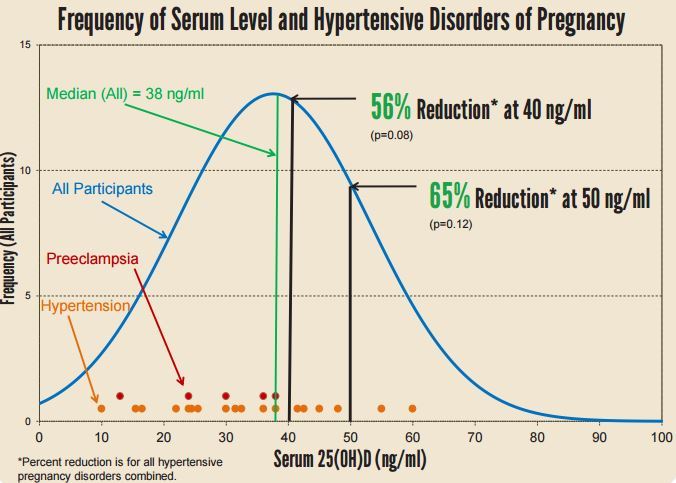Preeclampsia recurrence reduced 2 X by 50,000 IU of vitamin D every two weeks – RCT
The Effects of Vitamin D Supplement on Prevention from Recurrence of Preeclampsia in Pregnant Women with a History of Preeclampsia
 1. # The articles in Pregnancy AND Intervention are here:
{category}
1. # The articles in Pregnancy AND Intervention are here:
{category}
📄 Download the PDF from VitaminDWiki
Sanam Behjat Sasan 1* , Farnaz Zandvakili 2 , Nasrin Soufizadeh 3 ’ Elaheh Baybordi 4
1 Resident, Obstetric and Gynecology Department, school of medicine, Kurdistan university of medical science, Sanandaj, Iran.
23 Assistant Professor, Obstetric and Gynecology Department, school of medicine, Kurdistan university of medical science, Sanandaj, Iran.
4 Community Medicine Specialist, ACECR medical center Manager, Tabriz, Iran * Corresponding Author: Sanam Behjat Sasan, Email:sanam.sasan@yahoo.com
Introduction: Preeclampsia is a pregnancy-specific syndrome which could affect almost the whole body organs. There are different assumptions concerning reasons behind preeclampsia one of which is concerned with deficiency of vitamin D in pregnancy cases.
Method and Materials: The present study is a randomized controlled clinical trial which aims to determine the effect of vitamin D supplement on reducing probability of recurrent preeclampsia in pregnant women with history of preeclampsia. After satisfaction of inclusion and exclusion, simple randomization and blinding were done concurrently. In this regard, 140 pockets of drug and placebo were randomly (by using table of random numbers) offered and neither physician nor patients know about administration of drug or placebo to patients.
After inclusion in the present study, blood samples of all patients were taken to analyze level of vitamin D. After 12 hours of fasting, level of vitamin D was determined through Liberman-buchard method and in a laboratory. Since date of pregnancy diagnosis, the intervention group received a 50,000 IU pearl vitamin D3 once every two weeks. The control group was administered placebo drug up 36th week of pregnancy. Identification of patients with preeclampsia was done through clinical examination and review of laboratory results (e.g. blood pressure of 90/140 mm Hg or higher in sitting position) and proteinuria of higher than +1 were considered as outcome of the present study.
Results: Total number of study participants was 142 individuals who had satisfied inclusion criteria. 72 patients were placed in control group while 70 patients were classified into intervention group. The final outcome of present study was comparing incurrence of preeclampsia in intervention group and control group. The patients in intervention group has significantly lower (p-value=0.036) probability of preeclampsia than patients in control group.
One could state, with confidence interval of 95 percent, risk of preeclampsia for control group was 1.94 higher than that for intervention group (2.01, 3.71). The intended intervention (i.e. prescription of vitamin D) has a protective effect against recurrent preeclampsia.
Conclusion: Vitamin D deficiency is highly prevalent in all parts of the world. Pregnant women and neonates are highly vulnerable to vitamin D deficiency. Vitamin D supplementation therapy in pregnancy can help in reducing the incidence of gestational hypertension/ preeclampsia.
